A Narrow Optical Pulse Emitter Based on LED: NOPELED
Abstract
1. Introduction
2. NOPELED Overview
3. Electronics
3.1. Pulser Circuit
3.2. Control Board
3.2.1. Control Block
3.2.2. Trigger Block
- Selector: Through five logic gates and one digital selection output of the microcontroller, this block is responsible for selecting between the trigger provided externally and an internal trigger generated by the microcontroller. They are fast response gates; around 4 ns of rise time. The trigger configuration, external or internal, is selected by a microcontroller digital output.
- Adapter: The trigger signal received, whether internal or external, is adapted. A fast comparator improves the response of the output, reducing the rise time of the trigger because the sharper the rise time of the trigger, the shorter the optical pulse produced.
3.2.3. Booster Subsystem
- Booster DC/DC: The electronics necessary for the correct operation of the micro converter is the main component of the booster. The variation in the voltage obtained at the output of the micro converter is obtained by modifying the duty cycle of the signal of the PWM module of the microcontroller. The duty signal varies between 1% and 82% of duty. It is limited by software, being able to modify this value through NOPELED I2C communication commands.
- Control filter: The filter adapts the square signal received from the microcontroller module to a signal filtered by a 1-order low-pass filter. This filter will only pass the low frequencies of the signal provided by the PWM module of the microcontroller. In this way, the desired voltage is controlled.
3.3. Layout
4. Embedded Software
4.1. Configuration of Fuses, Serial Ports, and Initialization
4.2. I2C Interrupt
4.3. Main Program
4.4. Simulation
5. Pulse Qualification
5.1. Electrical Pulse Shape
5.2. Pulse Intensity
5.3. Optical Pulse Shape
6. Conclusions
Author Contributions
Funding
Institutional Review Board Statement
Informed Consent Statement
Data Availability Statement
Conflicts of Interest
References
- The KM3NeT Collaboration; Aiello, S.; Albert, A.; Alshamsi, M.; Garre, S.A.; Aly, Z.; Ambrosone, A.; Ameli, F.; Andre, M.; Androulakis, G.; et al. The KM3NeT multi-PMT optical module. JINST 2022, 17, P0703. [Google Scholar] [CrossRef]
- Montagna, E. Characterization of SiPM for the photodetection system of DUNE far detector. Il Nuovo C. C 2022, 45, 1–5. [Google Scholar]
- Perlin, M. Particle Physics with the Pierre Auger Observatory. SciPost Phys. Proc. 2022, 8, 130. [Google Scholar] [CrossRef]
- Garfagnini, A.; JUNO Collaboration. Status of the Jiangmen Underground Neutrino Observatory. In Proceedings of Science PANIC2021, Online, 5–10 September 2021; p. 293. [Google Scholar]
- Inada, T. The recent status of the FASER detector. Nucl. Instrum. Meth. A 2022, 1040, 167185. [Google Scholar] [CrossRef]
- Abeysekara, A.U.; Albert, A.; Alfaro, R.; Alvarez, C.; Alvarez, J.D.; Arceo, R.; Arteaga-Velazquez, J.C.; Solares, H.A.; Barber, A.S.; Baughman, B.; et al. The 2HWC HAWC Observatory Gamma Ray Catalog. Astrophys. J. 2017, 843, 40. [Google Scholar] [CrossRef]
- Seabra, L.; Alves, R.; Andringa, S.; Bradbury, S.; Carvalho, J.; Clark, K.; Coulter, I.; Descamps, F.; Falk, L.; Gurriana, L.; et al. The LED and fiber based calibration system for the photomultiplier array of SNO+. J. Phys. Conf. Ser. 2015, 587, 012031. [Google Scholar] [CrossRef]
- Gao, B.; Liu, J.; Zhang, L.; Chen, M.; Zha, M.; Yao, Z. Time calibration of the LHAASO-WCDA detectors. In Proceedings of the International Cosmic Ray Conference (ICRC2021), Berlin, Germany, 11–23 July 2021; p. 751. [Google Scholar]
- Abbasi, R.; Ackermann, M.; Adams, J.; Aguilar, J.; Ahlers, M.; Ahrens, M.; Alispach, C.M.; Alves, A.A., Jr.; Amin, N.M.; An, R.; et al. A calibration study of local ice and optical sensor properties in IceCube. In Proceedings of the International Cosmic Ray Conference (ICRC2021), Berlin, Germany, 11–23 July 2021; p. 1023. [Google Scholar]
- Yang, J.; Chen, X.; He, C.; Huang, D.; Huang, Y.; Liu, J.; Ren, X.; Wang, A.; Wang, M.; Yan, B.; et al. Readout electronics and data acquisition system of PandaX-4T experiment. JINST 2022, 17, T02004. [Google Scholar] [CrossRef]
- Avrorin, A.D.; Avrorin, A.V.; Aynutdinov, V.M.; Bannash, R.; Belolaptikov, I.A.; Brudanin, V.B.; Budnev, N.M.; Domogatsky, G.V.; Doroshenko, A.A.; Dvornicky, R.; et al. The Baikal-GVD detector calibrations. In Proceedings of the International Cosmic Ray Conference (ICRC2019), Madison, WI, USA, 24 July–1 August 2019; p. 878. [Google Scholar]
- Gong, Q.; Zhao, W. Ultrafast Science to Capture Ultrafast Motions. Ultrafast Sci. 2021, 2021, 9765859. [Google Scholar] [CrossRef]
- Jiang, T. Ultrafast fiber lasers mode-locked by two-dimensional materials: Review and prospect. Photon. Res. 2020, 8, 78–90. [Google Scholar] [CrossRef]
- Li, L.; Pang, L.; Wang, R.; Zhang, X.; Hui, Z.; Han, D.; Zhao, F.; Liu, W. Ternary Transition Metal Dichalcogenides for High Power Vector Dissipative Soliton Ultrafast Fiber Laser. Laser Photonics Rev. 2022, 16, 2100255. [Google Scholar] [CrossRef]
- Dvoyrin, V.; Tolstik, N.; Sorokin, E.; Sorokina, I.; Kurkov, A. Graphene-mode-locked Holmium fiber laser operating beyond 2.1 μm. In Proceedings of the European Conference on Lasers and Electro-Optics—European Quantum Electronics Conference, Munich, Germany, 21–25 June 2015; p. CJ74. [Google Scholar]
- Jiang, X.; Liu, S.; Liang, W.; Luo, S.; He, Z.; Ge, Y.; Wang, H.; Cao, R.; Zhang, F.; Wen, Q.; et al. Broadband nonlinear photonics in few-layer MXene Ti3C2Tx (T = F, O, or OH). Laser Photon. Rev. 2018, 12, 1700229. [Google Scholar] [CrossRef]
- Saleh, B.E.A.; Teich, M.C. Fundamentals of Photonics, 2nd ed.; John Wiely & Sons: Hoboken, NJ, USA, 2007. [Google Scholar]
- Amram, P.; Anghinolfi, M.; Anvar, S.; Ardellier-Desages, F.E.; Aslanides, E.; Aubert, J.J.; Azoulay, R.; Bailey, D.; Basa, S.; Battaglieri, M.; et al. The ANTARES optical module. Nucl. Instrum. Methods Phys. Res. 2002, 484, 369–383. [Google Scholar] [CrossRef]
- Lowder, D.M. The AMANDA Neutrino Telescope: Design, Construction, and Performance Astrophysics. Asp Conf. Ser. 1998, 141, 220. [Google Scholar]
- Adrián-Martínez, S.; Aiello, S.; Ameli, F.; Anghinolfi, M.; Ardid, M.; Barbarino, G.; Barbarito, E.; Barbato, F.C.T.; Beverini, N.; Biagi, S.; et al. Long term monitoring of the optical background in the Capo Passero deep-sea site with the NEMO tower prototype. Eur. Phys. J. C 2016, 76, 1–111. [Google Scholar] [CrossRef]
- Sefzick, T.; Kilian, K.; Oelert, W.; Wienands, G. A system for simulation of scintillator light signals. Nucl. Instrum. Methods Phys. Res. 1990, 288, 571–573. [Google Scholar] [CrossRef]
- Green, D.R. A LED system to test scintillation counter hodoscopes. Nucl. Instrum. Methods 1978, 151, 307–312. [Google Scholar] [CrossRef]
- Freitas, E.D.C.; Fernes, L.M.P.; Yahlali, N.; Perez, J.; Alvarez, V.; Borges, F.I.G.; Camargo, M.; Carcel, S.; Cebrian, S.; Cervera, A.; et al. PMT calibration of a scintillation detector using primary scintillation. J. Instrum. 2015, 10, C02039. [Google Scholar] [CrossRef]
- Wu, D.; Xu, J.; He, M.; Wang, Z.; Chu, Z. Study of the front-end signal for the 3-inch PMTs instrumentation in JUNO. arXiv 2022, arXiv:2204.02612. [Google Scholar] [CrossRef]
- Mishra, H.; Dragan, A.; Geddes, C.D. UV to NIR Surface Plasmon Coupled and Metal-Enhanced Fluorescence Using Indium Thin Films: Application to Intrinsic (Label-less) Protein Fluorescence Detection. J. Phys. Chem. C 2011, 115, 17227–17236. [Google Scholar] [CrossRef]
- Ki-Se, K. Metal-enhanced fluorescence in polymer composite films with Au@Ag@SiO2 nanoparticles and InP@ZnS quantum dots. RSC Adv. 2019, 9, 224–233. [Google Scholar]
- Schmidt, C.; Simmank, O.; Kreutzer, S. Time-resolved optically stimulated luminescence of quartz in the nanosecond time domain. J. Lumin. 2019, 213, 376–387. [Google Scholar] [CrossRef]
- Bronson, T. Molecular Chemosensors for Heavy Metals: From Synthesis to Reusable Device. Ph.D. Dissertation, Brigham Young University, Provo, UT, USA, 2003. [Google Scholar]
- Paul, U.P. Fluorescence Detector for Proteins and Toxic Metals. Master’s Thesis, Brigham Young University, Provo, UT, USA, April 2004. [Google Scholar]
- Greus, F.S. ANTARES time calibration. Nucl. Instrum. Meth. A 2009, 602, 72–75. [Google Scholar] [CrossRef]
- Ageron, M.; Aguilar, J.A.; Albert, A.; Ameli, F.; Anghinolfi, M.; Anton, G.; Anvar, S.; Ardellier-Desages, F.; Aslanides, E.; Aubert, J.J.; et al. ANTARES Optical Beacon System. Nucl. Instrum. Meth. A 2007, 578, 498–509. [Google Scholar] [CrossRef]
- Kapustinsky, J.S.; DeVries, R.M.; DiGiacomo, N.J.; Sondheim, W.E.; Sunier, J.W.; Coombes, H. A fast timing light pulser for scintillation detectors. Nucl. Instr. Meth. Phys. Res. 1985, 241, 612. [Google Scholar] [CrossRef]
- Veledar, O.; Byrne, P.O.; Danaher, S.; Allen, J.I.; Thompson, L.F.; McMillan, J.E. Simple techniques for generating nanosecond blue light pulses from light emitting diodes. Meas. Sci. Technol. 2007, 18, 131. [Google Scholar] [CrossRef]
- Flynn, M.J. Computer Architecture: Pipelined and Parallel Processor Design; Jones & Bartlett Learning: Burlington, MA, USA, 1995; pp. 54–56. ISBN 0867202041. [Google Scholar]
- Available online: https://docs.broadcom.com/doc/AV02-2228EN (accessed on 4 September 2022).
- Bollinger, L.M.; Thomas, G.E. Measurement of the time dependence of scintillation intensity by a delayed-coincidence method. Rev. Sci. Instrum. 1961, 32, 1044–1050. [Google Scholar] [CrossRef]
- McMillan, J.E. The Single Photon Technique for Measuring LED Pulser Flash Width; SH-HEP-99-07; Sheffield Particle Astrophysics (Sheffield University—Department of Physics and Astronomy Internal Publication): Sheffield, UK, 1999. [Google Scholar]
- Available online: https://docs.broadcom.com/doc/AV02-1823EN (accessed on 4 September 2022).
- Available online: https://vcclite.com/product/vaol-5euv0t4/ (accessed on 4 September 2022).
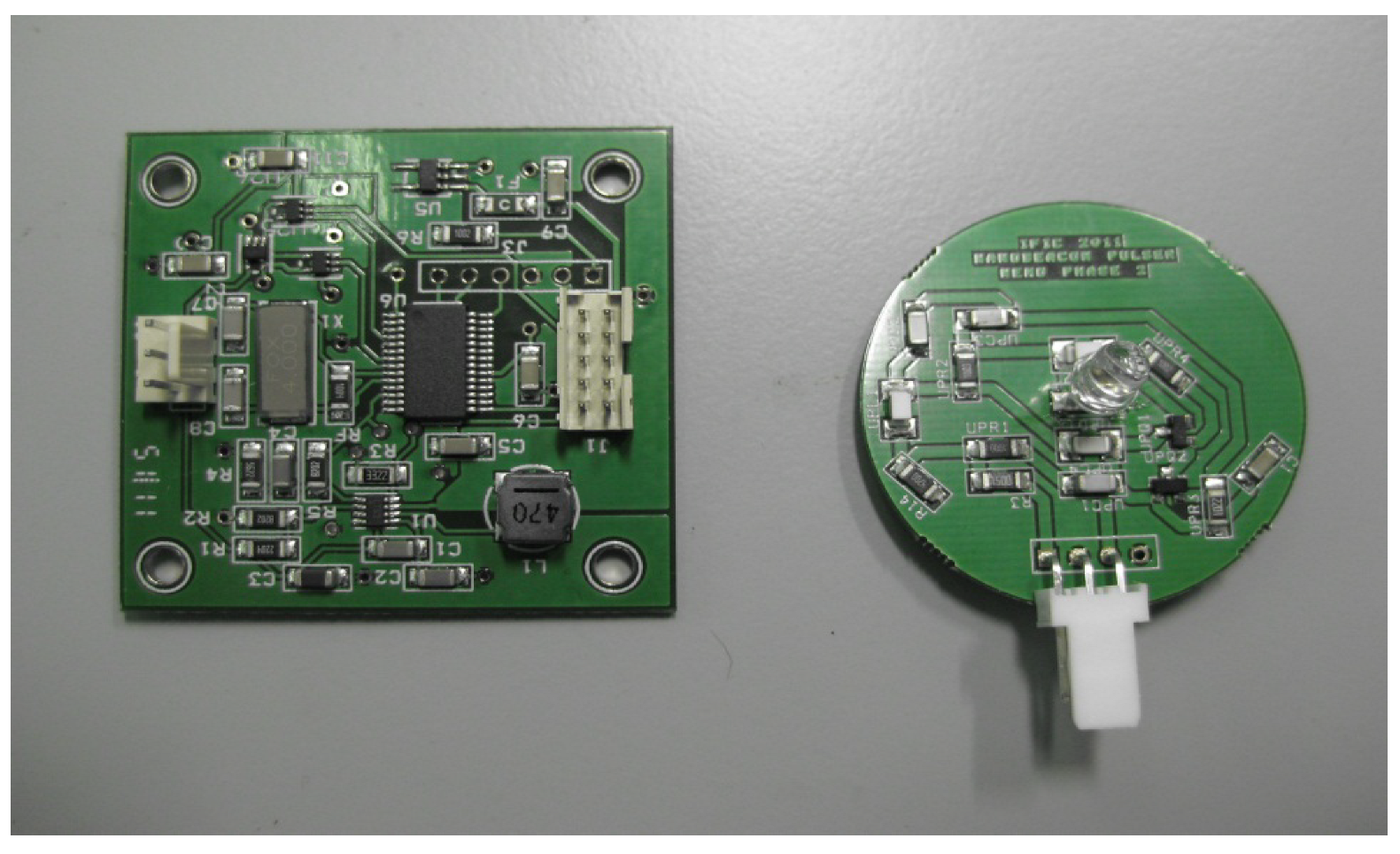



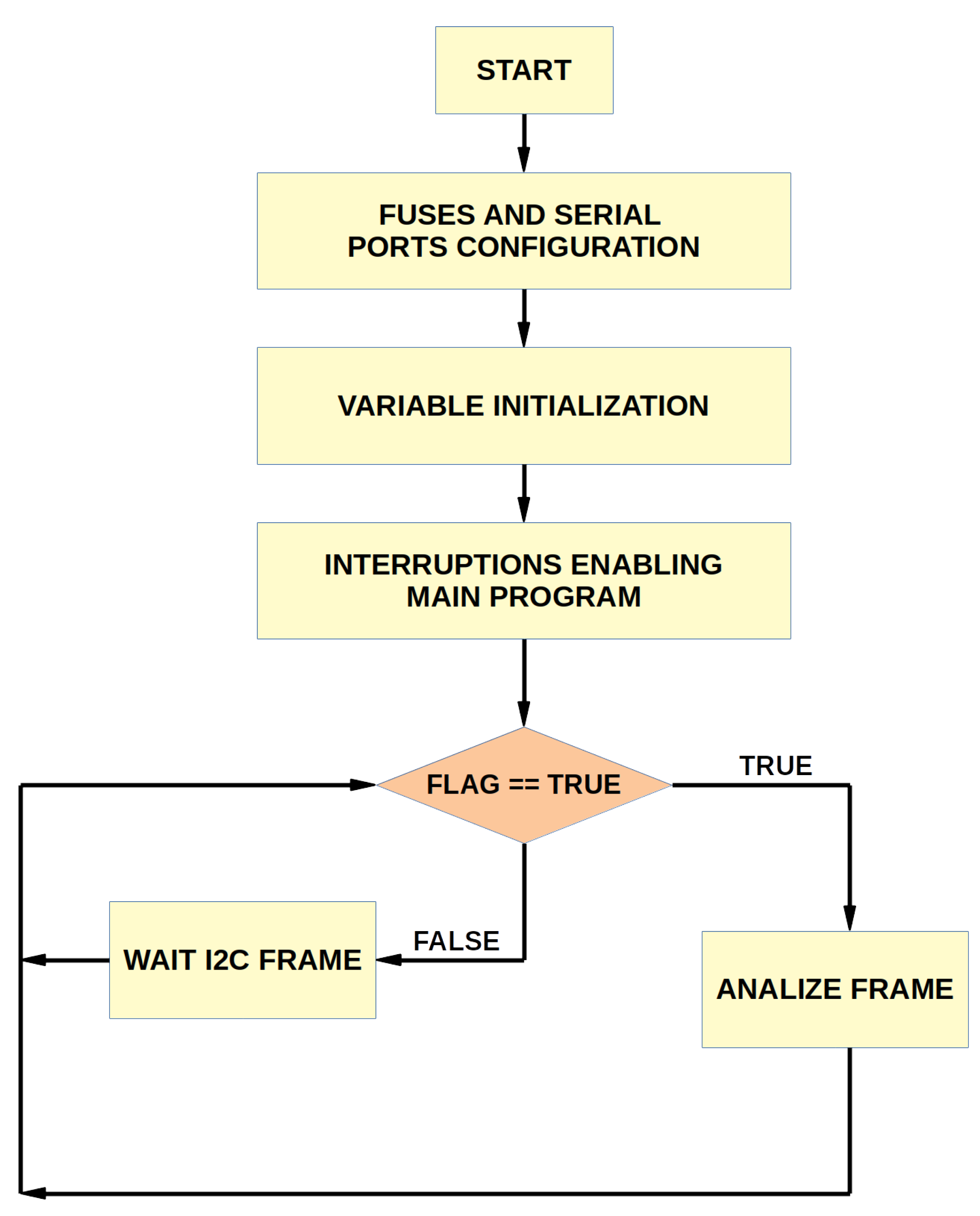



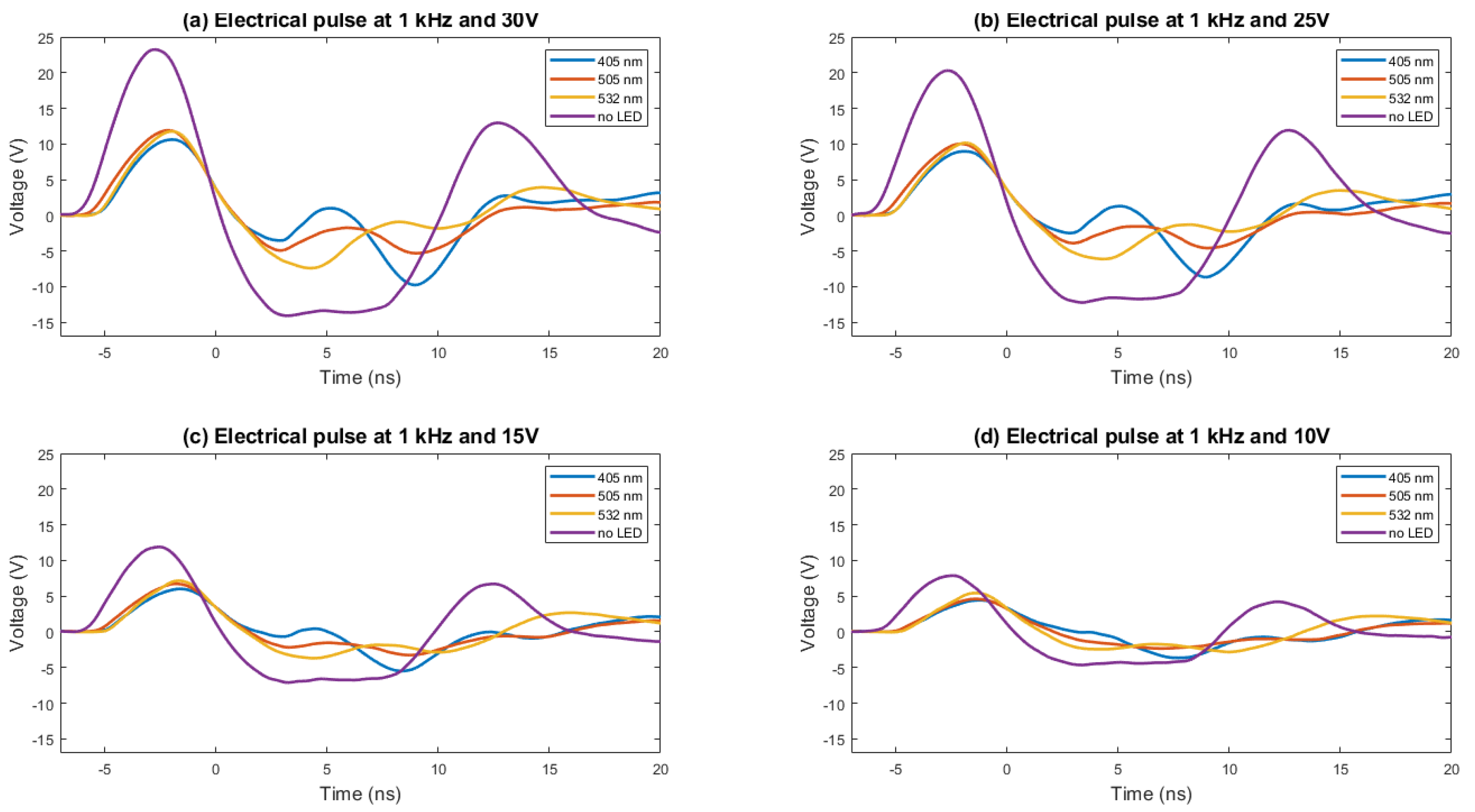
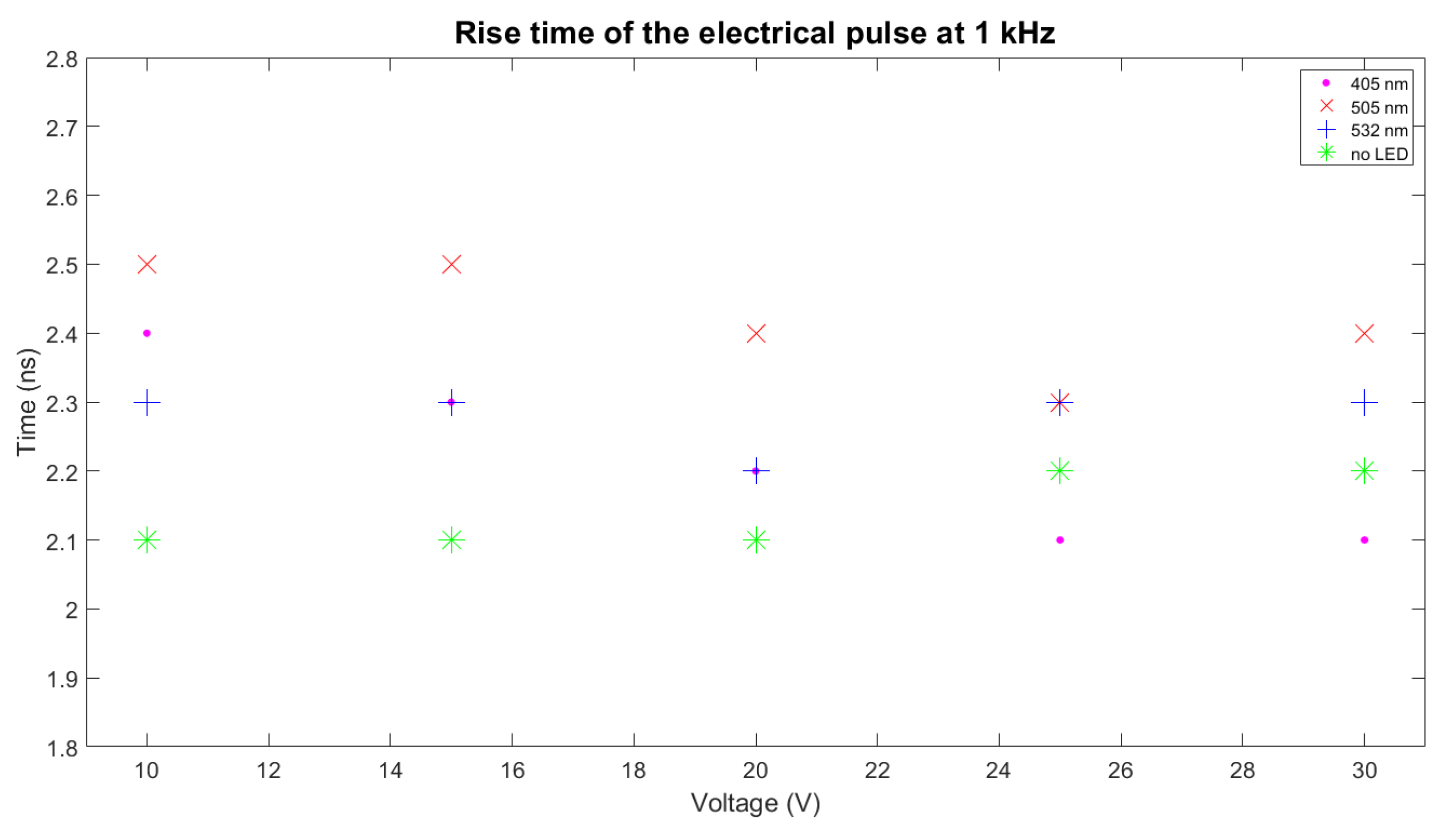
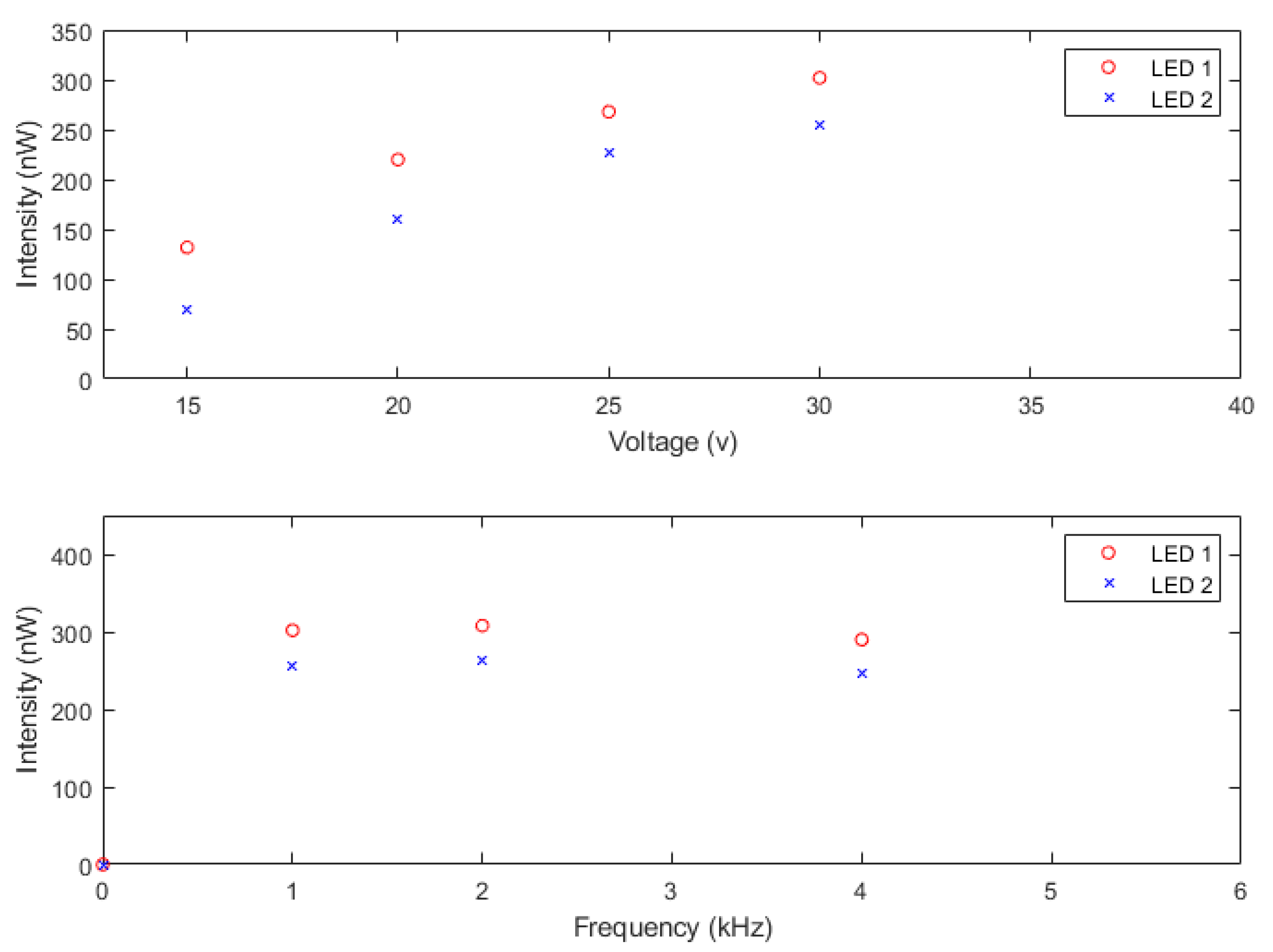
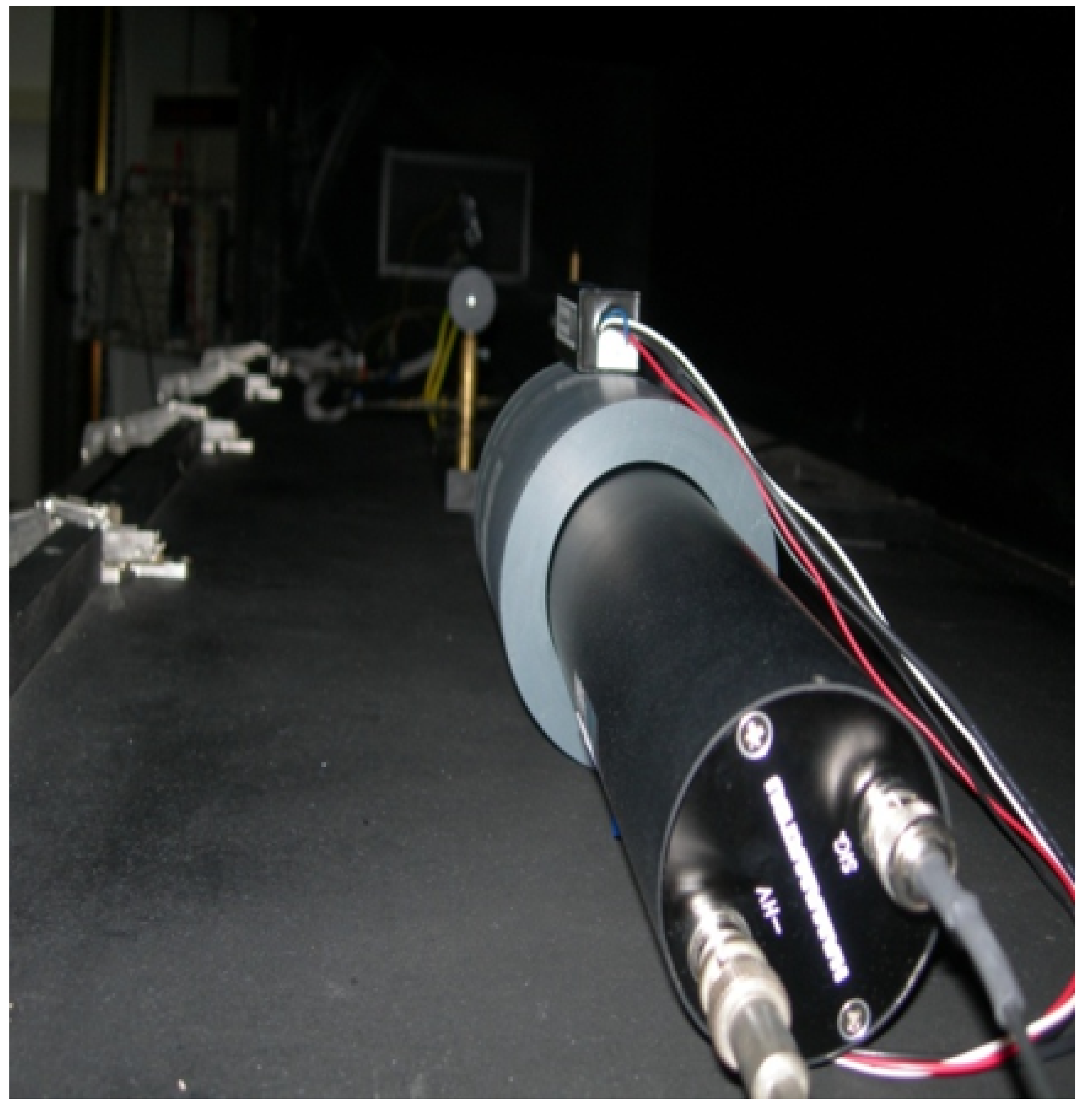
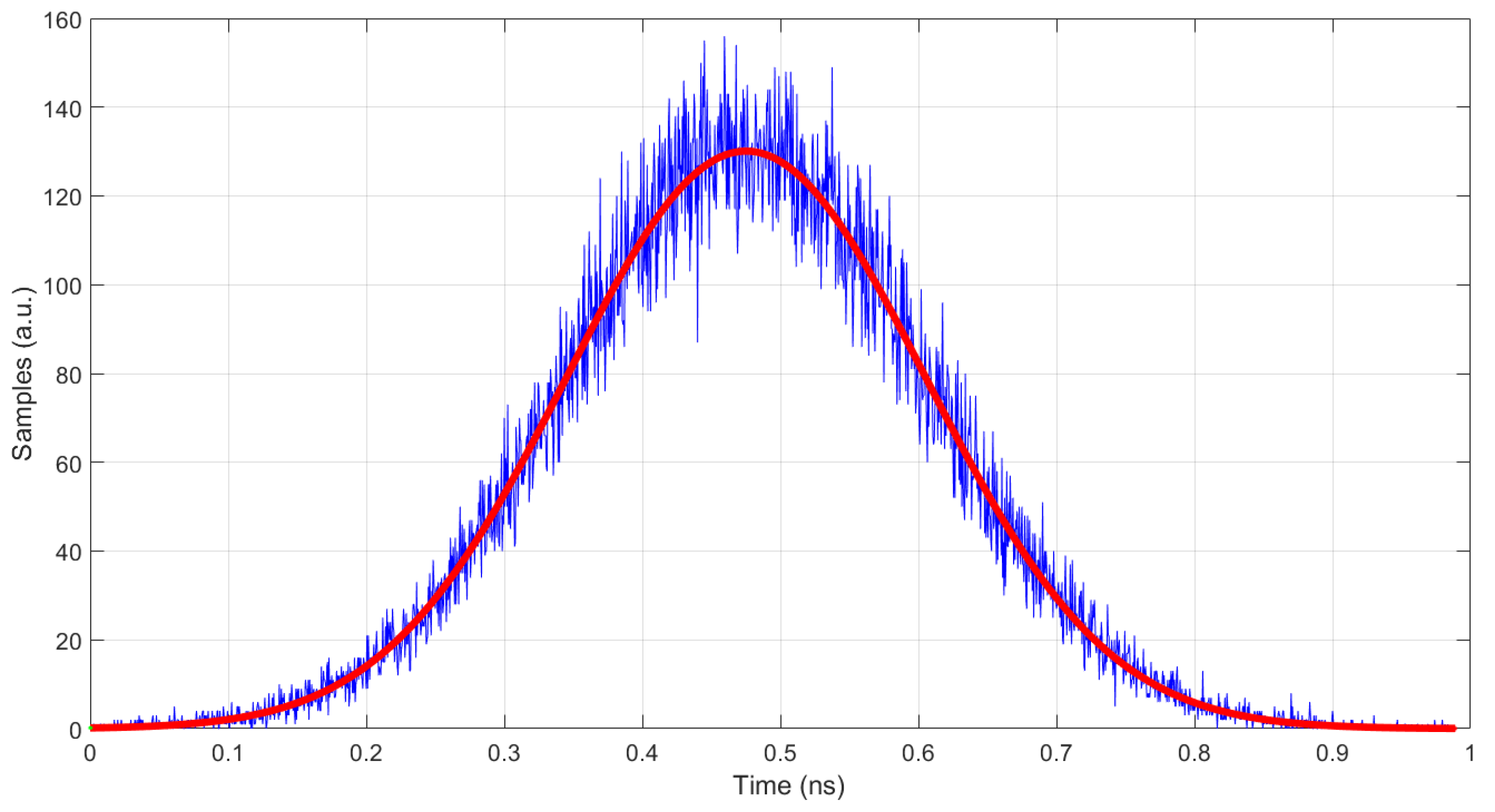


Publisher’s Note: MDPI stays neutral with regard to jurisdictional claims in published maps and institutional affiliations. |
© 2022 by the authors. Licensee MDPI, Basel, Switzerland. This article is an open access article distributed under the terms and conditions of the Creative Commons Attribution (CC BY) license (https://creativecommons.org/licenses/by/4.0/).
Share and Cite
Real, D.; Calvo, D.; Díaz, A.; Salesa Greus, F.; Sánchez Losa, A. A Narrow Optical Pulse Emitter Based on LED: NOPELED. Sensors 2022, 22, 7683. https://doi.org/10.3390/s22197683
Real D, Calvo D, Díaz A, Salesa Greus F, Sánchez Losa A. A Narrow Optical Pulse Emitter Based on LED: NOPELED. Sensors. 2022; 22(19):7683. https://doi.org/10.3390/s22197683
Chicago/Turabian StyleReal, Diego, David Calvo, Antonio Díaz, Francisco Salesa Greus, and Agustín Sánchez Losa. 2022. "A Narrow Optical Pulse Emitter Based on LED: NOPELED" Sensors 22, no. 19: 7683. https://doi.org/10.3390/s22197683
APA StyleReal, D., Calvo, D., Díaz, A., Salesa Greus, F., & Sánchez Losa, A. (2022). A Narrow Optical Pulse Emitter Based on LED: NOPELED. Sensors, 22(19), 7683. https://doi.org/10.3390/s22197683





